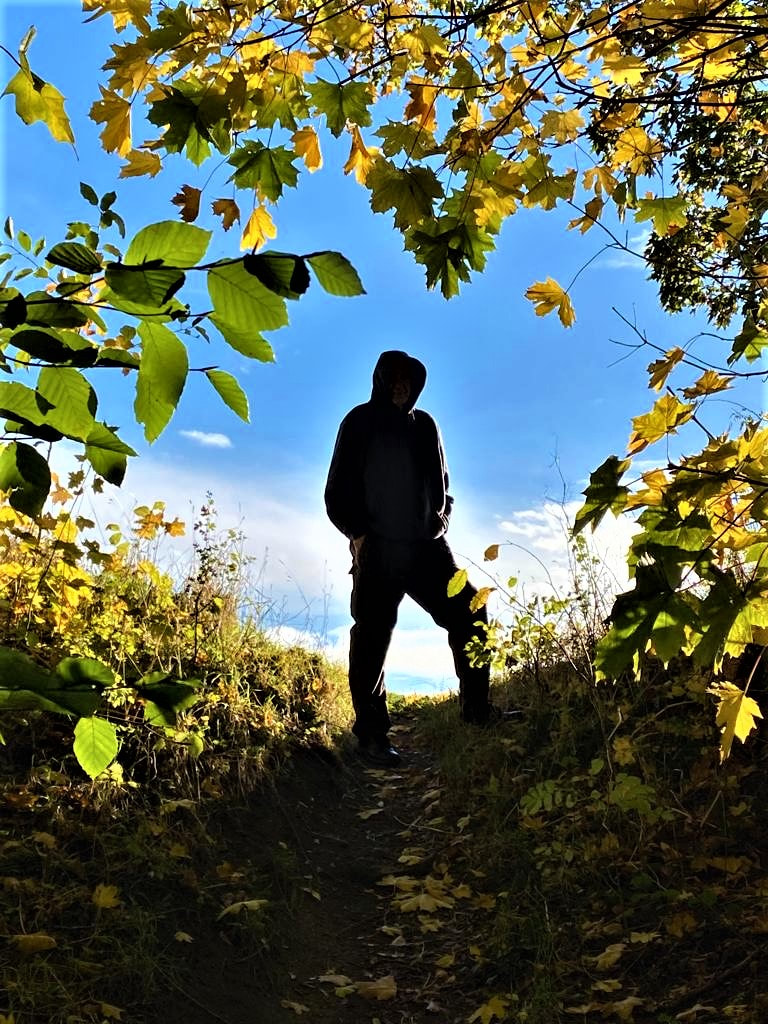|
‘What is most important about any event is not what happened, but what it means. Events and meanings are loosely coupled: the same events can have very different meanings for different people because of differences in the schema that they use to interpret their experience.’ These illuminating words from Bolman & Deal in Reframing Organisations (1991) have stayed with me throughout my coaching and OD practice.
They have strong resonances with similar insights in rational emotive therapy and cognitive behavioural therapy. According to Ellis, what we feel in any specific situation or experience is governed (or at least influenced) by what significance we attribute to that situation or experience. One person could lose their job and feel a sense of release to do something new, another could face the same circumstances and feel distraught because of its financial implications. What significance we attribute to a situation or experience and how we may feel and act in response to it depends partly on our own personal preferences, beliefs, perspective and conscious or subconscious conclusions drawn from our previous experiences. It also depends on our cultural context and background, i.e. how we have learned to interpret and respond to situations as part of a wider cultural group with its own history, values, norms and expectations. A challenge and opportunity in coaching and OD is sometimes to help a client (whether individual or group) step back from an immediate experience and reflect on what the client (or others) are noticing and not noticing, what significance the client (or others) are attributing to it and how this is affecting emotional state, engagement, choices and behaviour. Exploring in this way can open the client to reframing, feeling differently and making positive choices. In his book, Into the Silent Land (2006), Laird makes similar observations. Although speaking about distractions in prayer and the challenges of learning stillness and silence, his illustrations provide great examples of how the conversations we hold in our heads and the significance we attribute to events often impact on us more than events themselves. He articulates this phenomenon so vividly that I will quote him directly below: ‘We are trying to sit in silence…and the people next door start blasting their music. Our mind is so heavy with its own noise that we actually hear very little of the music. We are mainly caught up on a reactive commentary: ‘Why do they have to have it so loud!’ ‘I’m going to phone the police!’ ‘I’m going to sue them!’ And along with this comes a whole string of emotional commentary, crackling irritation, and spasms of resolve to give them a piece of your mind when you next see them. The music was simply blasting, but we added a string of commentary to it. And we are completely caught up in this, unaware that we are doing much more than just hearing music. ‘Or we are sitting in prayer and someone whom we don’t especially like or perhaps fear enters the room. Immediately, we become embroiled with the object of fear, avoiding the fear itself, and we begin to strategise: perhaps an inconspicuous departure or protective act of aggression or perhaps a charm offensive, whereby we can control the situation by ingratiating ourselves with the enemy. The varieties of posturing are endless, but the point is that we are so wrapped up in our reaction, with all its commentary, that we hardly notice what is happening, although we feel the bondage.’ This type of emotional response can cloud a client’s thinking (cf ‘kicking up the dust’) and result in cognitive distortions, that is ways of perceiving a situation that are very different (e.g. more blinkered or extreme) than those of a more detached observer. In such situations, I may seek to help reduce the client’s emotional arousal (e.g. through catharsis, distraction or relaxation) so that he or she is able to think and see more clearly again. I may also help the client reflect on the narrative he or she is using to describe the situation (e.g. key words, loaded phrases, implied assumptions, underlying values). This can enable the client to be and act with greater awareness or to experiment with alternative interpretations and behaviours that could be more open and constructive. Finally, there are wider implications that stretch beyond work with individual clients. Those leading groups and organisations must pay special attention to the symbolic or representational significance that actions, events and experiences may hold, especially for those from different cultural backgrounds (whether social or professional) or who may have been through similar perceived experiences in the past. If in doubt, it’s wise ask others how they feel about a change, what it would signify for them and what they believe would be the best way forward.
26 Comments
Critical reflexivity…hmm…what’s that? Sounds complicated. It's something about noticing and paying attention to our own role in a story; how I influence what I perceive in any relationship, issue or situation. I was re-reading one of my favourite books, An Invitation to Social Construction (2009) by Kenneth Gergen this morning which introduces this concept with the following explanation: ‘Critical reflectivity is the attempt to place one’s premises into question, to suspend the ‘obvious’, to listen to alternative framings of reality and to grapple with the comparative outcomes of multiple standpoints…this means an unrelenting concern with the blinding potential of the ‘taken for granted’…we must be prepared to doubt everything we have accepted as real, true, right, necessary or essential’. I find this interesting, stimulating and exciting. It’s about journeying into not-knowing, entertaining the possibility that there could be very different ways of perceiving, framing or experiencing issues or phenomena. It’s about a radical openness to fresh possibilities, new horizons, hitherto unimaginable ideas. It’s a recognition that all my assumptions and preconceptions about reality could be limiting or flawed. I’ve found this critical reflexivity principle invaluable in my coaching and OD practice. How often people and organisations get stuck, trapped, by their own fixed ways of seeing and approaching things. The same cultural influences that provide stability can blind us to alternative possibilities. The gift of the coach or consultant is to loosen the ground, release energy and insight, create fresh options for being and action. It resonates with my reading of the gospels. Jesus Christ had a way of confronting the worldviews, traditions and apparent ‘common sense’ outlook of those he encountered in such a way that often evoked confusion, anger or frustration. It’s as if he could perceive things others couldn’t see. He had a way of reframing things that it left people feeling disorientated. He operated in a very different paradigm. I will close with words from Fook & Askeland (2006): ‘Reflexivity can simply be defined as an ability to recognise our own influence – and the influence of our social and cultural contexts on research, the type of knowledge we create and the way we create it. In this sense, then, it is about factoring ourselves into the situations we practice in.' There’s something comforting about being part of a group, fitting in, belonging. It enables me to relax, feel rooted, feel part of something bigger than myself, feel accepted by others. It helps me to feel safe, secure, loved. I sometimes choose which groups to identify with, e.g. those who share similar passions, interests or values to my own. At other times, I find myself part of groups by default, e.g. those who share my nationality or culture.
There’s a fascinating principle in social psychology that describes how we learn scripts and roles throughout life. Scripts are how people behave in different situations, roles are the parts we learn to play in those situations. How I ‘should’ behave at work, in a restaurant, whist driving on public roads etc. are all governed by social conventions or schemata, that is, implicit or explicit rules or codes of conduct that determine what is acceptable in each context. It’s easy to see how such norms arise and why they are perpetuated. At one level, playing out scripts enables social predictability, harmony and cohesion. It’s one of the reasons why encountering or moving between cultures with different norms and rules can feel so uncomfortable. At another level, groups often have a self-reinforcing influence. We develop patterns of thinking and behaviour that are repeated and become subconscious and normative. These are some of the reasons why challenging group thinking and behaviour can be so problematic. On the one hand, we and others may have a vested interest in sustaining group culture because of a psychological need to belong. On the other hand, group norms can become so entrenched that questioning them can feel bemusing, annoying, disruptive or subversive. Established groups have inherent potential for self-preservation and self-defence. Against this backdrop, I’m intrigued by Paul’s comment in the New Testament which says (my paraphrase): ‘(a) Don’t be shaped from without by how things work (literally, schemata) in the world around you but, instead, (b) be radically changed literally, metamorph) from within by a renewing of your mind.’ I’m struck by parallels with contemporary insights from (a) social psychology and (b) cognitive behavioural psychology. It acknowledges how people are shaped by culture. It’s an unavoidable social psychological principle. From our earliest experiences of social interaction, e.g. within a family, friendship, school, club, community or organisation, our thinking and behaviour are shaped by shared language, experiences, values and norms. At the same time, it challenges us to ‘wake up’, to become aware, to break out of hypnotic prevailing influences. For Paul, this is more than a purely cognitive exercise. It’s a spiritual transformation that will result in a profound shift of insight, perspective, values and behaviour. It’s something that God desires to do in, through and between us. It's a transformation that will set us free to see the world through fresh eyes, to reevaluate social norms and to act with autonomy. It will provoke resistance but it's also the way to authentic life. |
Nick WrightI'm a psychological coach, trainer and OD consultant. Curious to discover how can I help you? Get in touch! Like what you read? Simply enter your email address below to receive regular blog updates!
|




 RSS Feed
RSS Feed